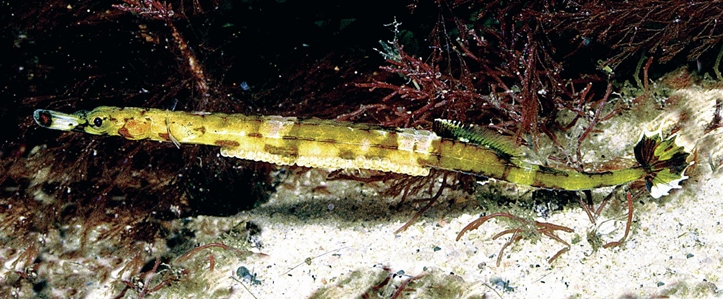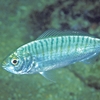General Description
Body long, slender; tail large, spikey; dorsal fin mostly on trunk, body behind dorsal fin much shorter than that before dorsal fin; posterior angles of body rings slightly raised and produced into spine-like points. Mostly brown or irregularly blotched with tan or white markings; anterior part of dorsal fin brown. To 10 cm.
Biology
These nocturnal pipefish usually live in pairs and swim upside-down close to the ceilings of caves, crevices and under ledges. They venture out into the open at night.
Habitat
Sheltered inshore rocky reefs in harbours, bays and inlets, in depths of 2-30 m.
Reefs
Distribution guide
Southern Australia.
Species Group
Fishes › Seahorses, pipefish and allies
Depth
Water Column
Max Size
10 cm
Commercial Species
No
Global Dispersal
Native to Australia
Conservation Status
- DSE Advisory List : Not listed
- EPBC Act 1999 : Not listed
- IUCN Red List : Not listed





